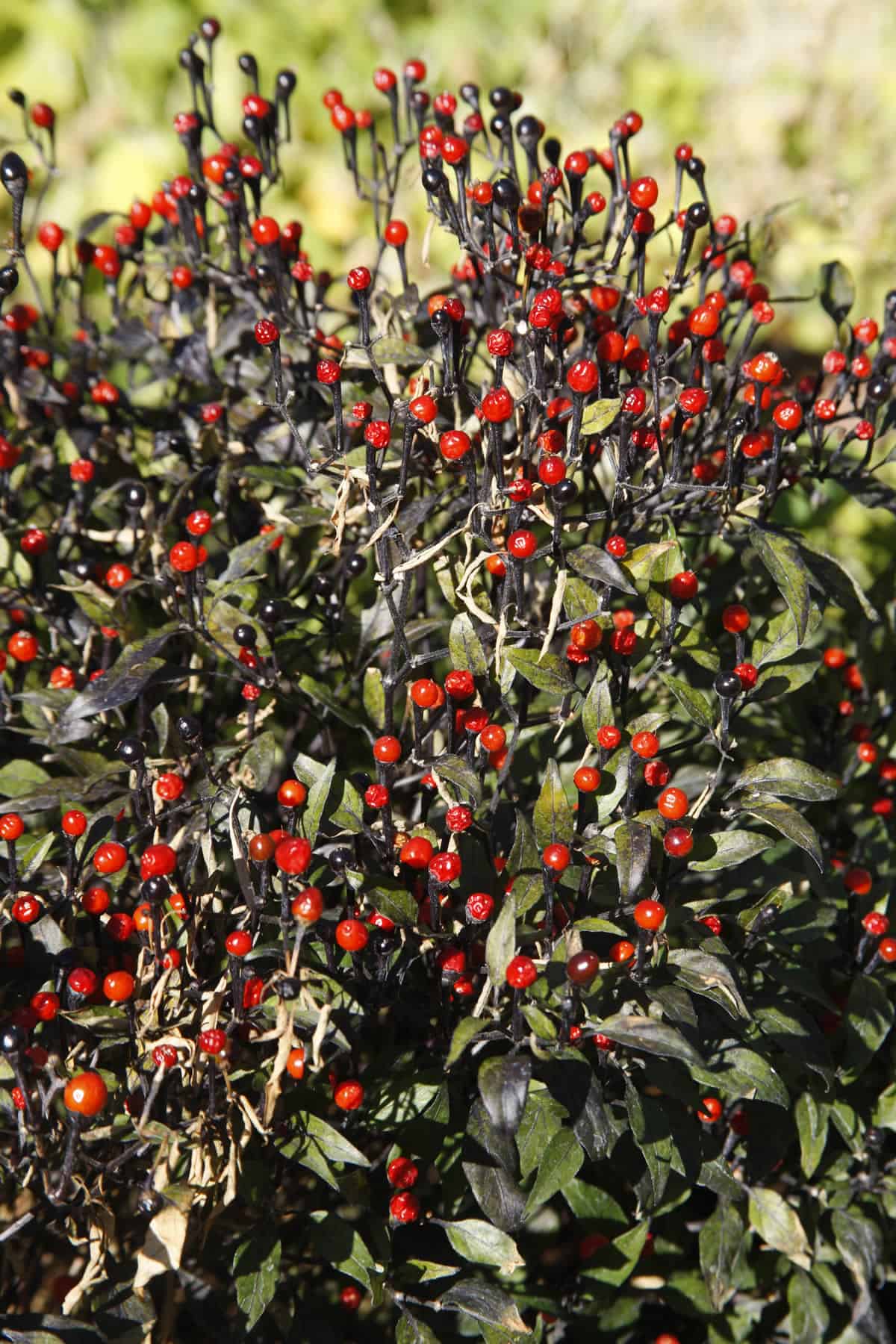The Chiltepin pepper, “chile tepin”, or “Chiltepine”, is a tiny, round or oval shaped, red to orange-red chile, measuring about .8 cm in diameter. It has grown in the wild throughout much of Northern Mexico and Southern United States for generations, and there is much folklore and history involving the plant in the US/Mexico Borderland areas. It is the only wild native chili pepper in the United States, sometimes referred to as “The Mother of All Peppers”. In fact, Texas named the chiltepin the state’s “official native pepper” in 1997. They are also called “bird peppers” because they are eaten and spread by wild birds, or “bird’s eye peppers” because of their size. It is said no home should be without a collection of the dried pods. It is even used as a preservative for meats. Chiltepin peppers are protected in the US in Coronado National Forest, Big Bend National Park and Organpipe Cactus National Monument. It has a rich history in the Native American culture and remains highly significant today to not only the people of the Sonoran region, but to the United States. It is definitely worth exploring and enjoying if you’re a chilihead or spicy food lover. The heat measures up to 100,000 Scoville Heat Units on the Scoville Scale, which is quite hot. Compare that to an average jalapeno pepper, which averages about 5,000 Scoville Heat Units, making the pepper up to 20 times hotter than a jalapeno. A serrano pepper measures up to 23,000 SHU, so the Chiltepin can be more than 4 times hotter. However, a chemical study made in 2015 measured these peppers at a range of 50,000 - 1,628,000 SHU, which would place them in the realm of the superhot chili peppers. The green fruit can also be used in salsas to bring in a nice level of heat, or are sometimes pickled with other ingredients and spices for a relish-like condiment that can accompany any number of dishes. They’re also great for making hot sauce from them, though admittedly, you’ll need a lot of them. The peppers are a big part of Sonoran cuisine, as they are native to the area. Dry them whole, or you can attempt to sun dry them in the open air, but beware of moisture in the air. Otherwise, the peppers will rot. Learn how to dehydrate chili peppers.
Dried chiltepin pods Chiltepin seeds
Have any questions? Contact me anytime! Happy to help you learn more. – Mike H. NOTE: This post was updated on 12/22/20 to include new information. It was originally published on 10/3/13.
